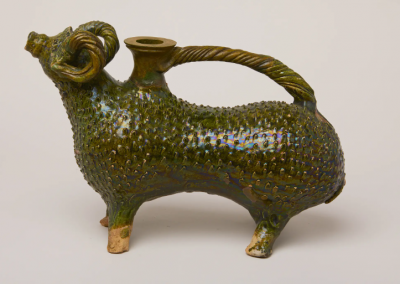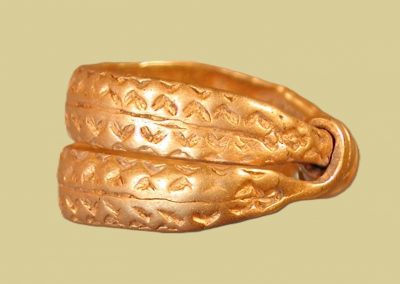Why do archaeologists find so many clay pipes?
Many museums have examples of clay pipes in their collections. They range from simple, undecorated pipes to more elaborate designs.
Broken clay pipes
Ryevitalise Community Dig, Ampleforth
Clay pipes like this are often found in archaeological digs. This reflects just how commonly they were used for smoking in the past and also gives us an indication of their inexpensive and disposable nature.
They were mass-produced from the 16th to the early 20th century with a simple, functional design allowing people of all classes to use them for smoking, mostly filled with tobacco.
Ryevitalise Community Dig
This object was one of many discovered during the Ryevitalise Community Dig in Ampleforth, North Yorkshire. It was actually found in one of the test pits dug in a field of a local school. Clay pipes are generally found in the top layer of soil as they are from more recent history.
The excavation was part of the wider Ryevitalise Landscape Partnership which helped to uncover evidence of past human activity, shedding light on the history of the area and the lives of those who lived there.
‘Big Digs’ and community digs like this contribute to real archaeological research. They often reveal fascinating insights that might otherwise remain hidden. By working systematically across an area, creating a series of test pits, archaeologists are able to get a broad chronology of a site and landscape.
Complete clay pipe
Brora Heritage Centre, Brora
The tobacco would be packed down into the bowl at the end.
Understanding clay pipes and their designs
While many clay pipes were plain and functional, some of the more interesting pipes featured decorative details. Some pipes moulded designs, such as floral patterns, geometric motifs, or even political symbols. Others bore figurative representations, including faces, animals, or coats of arms.
To mark special occasions, commemorative pipes were also produced, celebrating royal coronations or even military victories.
Many pipes carried a maker’s mark or stamp which helps historians to identify their place of manufacture and can even give information about trade routes and travel.
Nowadays, far fewer people smoke today than in Victorian times. In the 19th century, smoking was widespread and socially accepted, with tobacco being consumed in various forms, including clay pipes, cigars, and later cigarettes. There were few health concerns about smoking, and it was often seen as a fashionable or even respectable habit.
Today, smoking rates have significantly declined due to increased awareness of health risks, stricter regulations, and public health campaigns.
Watch the video – explore these objects with your group. What are they, why are so many found and what can we learn from them about the people of the past?
Watch The Video With Subtitles
Activity – Create Your Own
Explore the world of archaeology in more detail.
If you’ve ever wanted to find out more about life as an archaeologist, a really good way is to get involved with an archaeological dig. These often take place in communities around the country. Find out more in this activity.
Why do you think so many broken pipes are found?
Do you think these would have been a difficult object to mass produce? Why / why not?
What designs can you spot on the pipe? Who do you think might have owned a pipe like this?
Does it surprise you that people went to the trouble of decorating pipes even though they broke so frequently?
Why do you think clay pipes like these stopped being used in the early 20th century?
Do you think there is a modern equivalent to clay pipes? If so, what?
How do you think the material differs from what would be used today?
What can we learn from the example of clay pipes about the impact of littering on our environment? Do you think people will be digging up our litter in 150 years? What sorts of things might people find?
If you did a community dig in a field near you, do you think you’d find lots of these objects? Why / why not? What else might you find?


Vocabulary
Archaeology: The study of past human life by digging up and examining old objects, buildings, and remains
Community Dig: An archaeological excavation where local people help to dig and learn about history
Tobacco: A plant whose leaves are dried and used for smoking or chewing
Disposable: Something not made to last, but to be used for a short time and then thrown away
Hands on History
Find out more about the ‘Ryevitalise’ project and the Big Dig in Ampleforth on the North York Moors National Park website.
There are lots of ways to get involved in community digs. In nearby Scarborough, the Scarborough Archaeological and Historical Society runs regular excavations and open days.
The Ryevitalise project team worked with DigVentures to make their community dig happen. DigVentures run events in lots of places – perhaps there’s one near you.
You can also find out more about becoming a Young Archaeologist.
Another useful website is the Council for British Archaeology.
Discover more archaeology elsewhere on the site…










